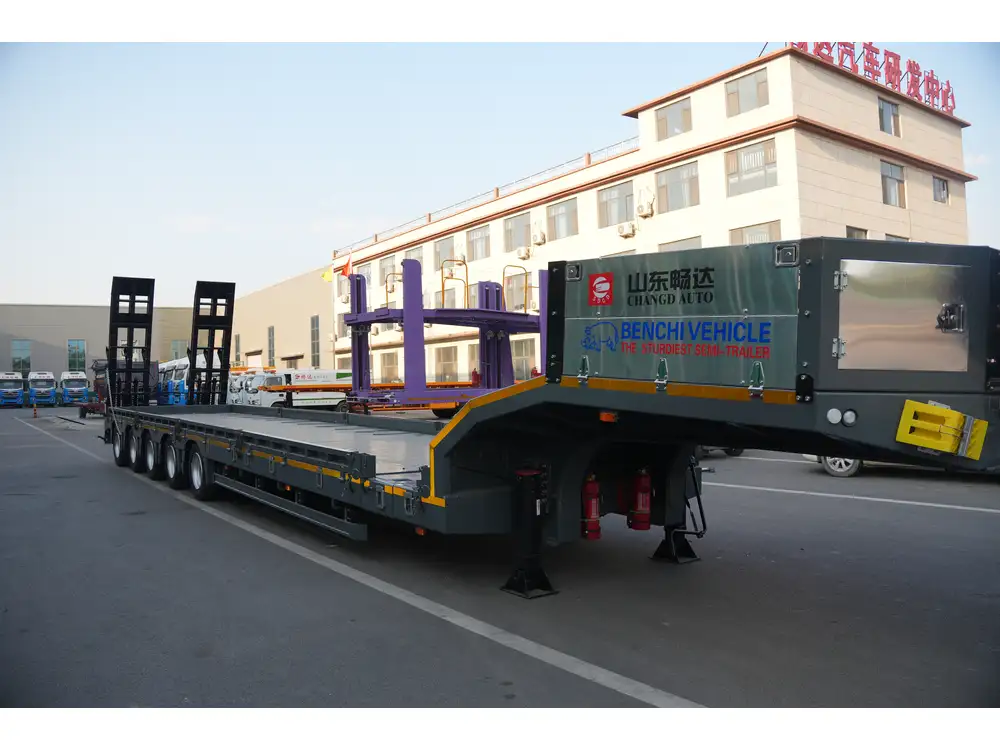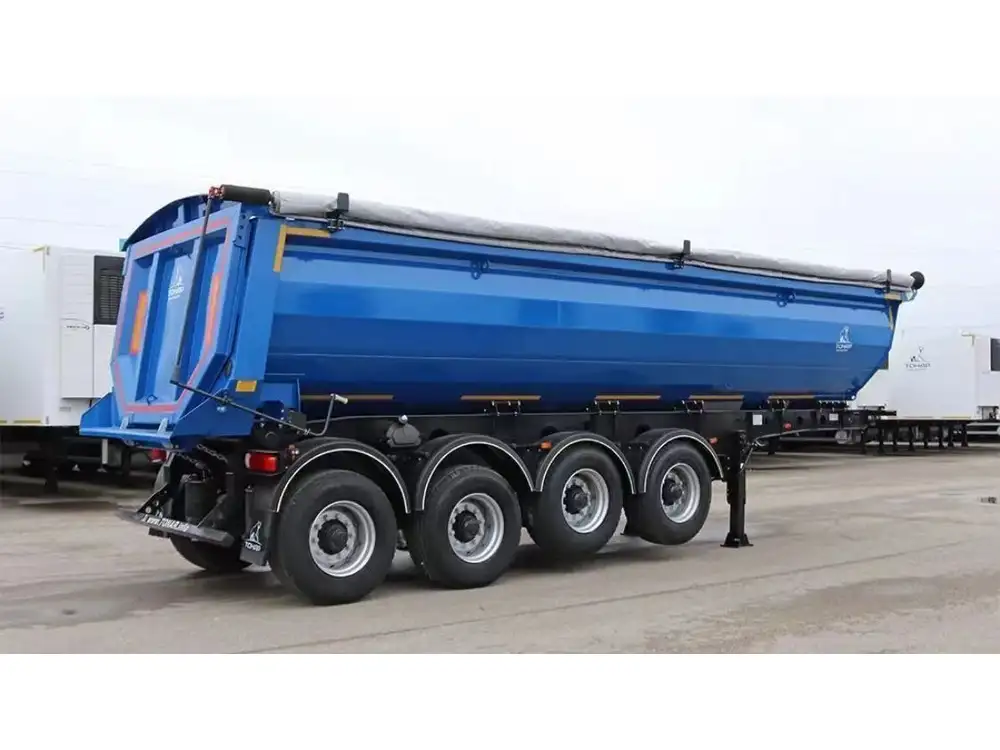Introduction to Semi-Trailer Fuel Tanks
When considering the logistics of transportation, one question that often arises is, “How many gallons of fuel does a semi-trailer hold?” This inquiry is not merely a matter of curiosity; it’s a critical factor influencing operational efficiency, cost management, and the planning of long-haul routes. Fuel capacity can vary significantly based on the semi-trailer design, the truck model, and the intended application, all of which we will explore in detail.
Types of Semi-Trailers and Their Fuel Capacities
Fuel tank capacities in semi-trailers may vary depending on several factors, including the type of truck, the configuration of the tanks, and any specific modifications for enhanced range. Below is an overview of the different types of semi-trailer fuel tanks.
| Type of Semi-Trailer | Average Fuel Capacity (Gallons) | Typical Uses |
|---|---|---|
| Standard Tractor Units | 100 – 300 | Long-haul freight, trucking |
| Heavy-Duty Models | 300 – 500 | Oversized loads, construction, heavy machinery |
| Dual-Tank Configurations | 200 – 400 (each tank) | Maximum range and efficiency for long distances |
| Specialty Trailers | Varies; typically lower | Niche hauling like livestock or refrigerated goods |

Factors Influencing Fuel Capacity Decisions
1. Truck Design and Configuration
The design of the truck can greatly influence the amount of fuel it can carry. For instance, newer models often have a more efficient layout allowing for larger tanks without compromising weight distribution. Furthermore, manufacturers tend to offer a plethora of configurations that include:
- Single Fuel Tank
- Dual Fuel Tanks
- Customizable Tank Sizes
2. Regulatory Constraints
Regulations concerning weight limits can also impose restrictions on fuel tank sizes. In many jurisdictions, there are strict limits on the maximum weight a semi-trailer can legally operate, which includes the weight of fuel. As such, companies must balance between having sufficient fuel capacity and adhering to legal requirements.

3. Route Planning and Fuel Efficiency
Long-haul trucking routes require a thoughtful approach to fuel management. Factors such as terrain, expected stops, and average fuel economy of the semi-trailer all contribute to how much fuel you should have on board. Higher fuel capacity allows for fewer stops, improving time efficiency, but careful route analysis is essential to optimize this advantage.
Calculating the Fuel Needed for Various Routes
Let’s explore how to estimate fuel needs for common trucking scenarios. An efficient calculation involves understanding distance, fuel consumption rates, and the fuel capacity of your semi-trailer.
Example Scenario
- Distance: 600 miles
- Average Fuel Efficiency: 6.5 miles/gallon
- Total Gallons Required:
Based on the tank capacities discussed earlier, a truck with a fuel capacity of 100 gallons would suffice, but you wouldn’t have much reserve. Planning for situations where fuel stops might be limited is crucial, potentially suggesting a dual-tank setup for longer trips.

Common Fuel Types Used in Semi-Trailers
Semi-trailers predominantly run on diesel fuel, but alternatives are gaining traction. Each type of fuel has significant implications for the operational economics of the operator.
1. Diesel Fuel
Traditional and widely used, diesel offers great energy density, allowing trucks to travel further with less fuel compared to gasoline.
2. Biodiesel and Renewable Diesel
As the industry shifts towards greener options, biodiesel made from vegetable oils or animal fats presents an eco-friendly solution, although fuel tank modifications may be required to handle the different combustion properties.

3. Compressed Natural Gas (CNG) and Liquefied Natural Gas (LNG)
CNG and LNG are becoming increasingly popular alternatives, especially in urban settings. However, tanks for these fuels differ significantly, affecting the overall fuel capacity of the semi-trailer.
Key Advantages of Optimal Semi-Trailer Fuel Capacity
Having the right fuel capacity can yield numerous benefits:
- Cost Efficiency: Reducing fuel stops translates to less downtime and the associated costs of idling trucks.
- Extended Range: Longer trips between refuels significantly improve operational logistics, particularly on rural routes with sparse fuel availability.
- Flexibility: More fuel means the ability to take routes that may otherwise require frequent stops, optimizing journey planning.
Disadvantages of Large Fuel Tanks
Though larger tanks provide benefits, there are drawbacks to consider as well:
- Increased Weight: Having too much fuel can lead to exceeding weight limits, resulting in fines or forced detours.
- Higher Purchase Costs: Custom or larger fuel tanks come at a premium, impacting the initial investment in the vehicle.
- Refueling Infrastructure: Not all routes provide suitable refueling options for larger tanks, necessitating more strategic route choices.

How to Maintain Semi-Trailer Fuel Systems
Maintaining fuel systems in your semi-trailer is critical for preventing issues that can affect operation and efficiency. Key maintenance tasks include:
- Regular Tank Cleaning: Ensures that tanks are free from contaminants.
- Fuel Quality Checks: Monitoring for water contamination and microbial growth, especially for biodiesel and alternative fuels.
- Inspecting Fuel Lines and Filters: Prevents leaks and fuel supply issues.
Maintenance Checklist
| Task | Frequency |
|---|---|
| Check fuel levels | Before every trip |
| Inspect fuel tanks | Monthly |
| Clean filters | Quarterly |
| Check for leaks | During every refueling |
Conclusion: Maximizing Operational Efficiency Through Smart Fuel Management
Understanding the fuel capacity of a semi-trailer and the numerous factors involved is essential for any operator in the freight industry. By selecting the appropriate tank size, understanding the fuel types available, and following a rigorous maintenance regime, operators can ensure they maximize both efficiency and profitability.
Through careful route planning, a solid understanding of fuel efficiency, and adherence to maintenance schedules, companies can significantly improve their bottom lines while ensuring compliance with transport regulations. By focusing on these core areas, operators will not only answer the question of how many gallons of fuel does a semi-trailer hold but also leverage that understanding into operational excellence.



